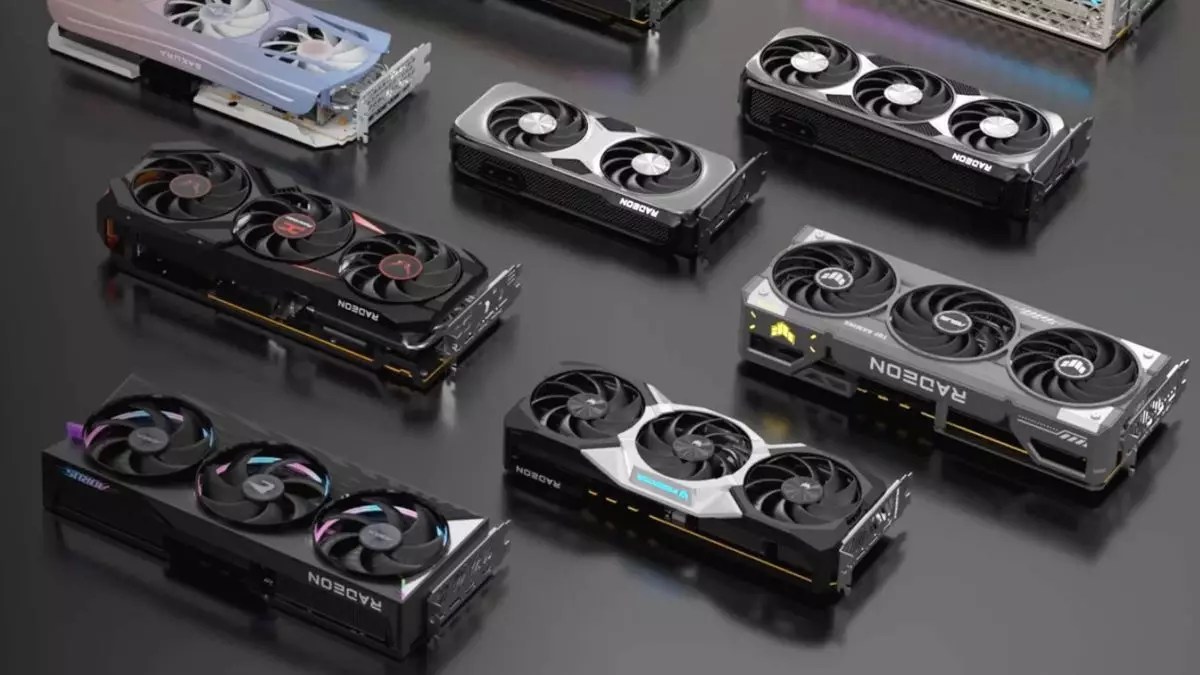The release of new graphics processing units (GPUs) is a highly anticipated event in the gaming and tech communities. As we approach the first quarter of 2025, the buzz surrounding AMD’s Radeon RX 9070 XT is palpable, revealing a mixture of expectation and questions regarding its specifications and market impact. This article explores the implications of the leaked details, market expectations, and the potential consequences of timing and availability for AMD’s new offering.
Recent information uncovered by HKEPC suggests that AMD’s RX 9070 XT will be powered by the ‘Navi 48’ GPU architecture, marking it as a noteworthy addition to the Radeon lineup. The card is speculated to feature 4,096 shader cores, paired with a robust 16 GB of GDDR6 memory on a 256-bit memory bus. Such specifications suggest that the RX 9070 XT will sit comfortably between its predecessors, the RX 7800 XT and RX 7900 XT, both in terms of raw power and capability.
Interestingly, a notable benchmark score of 211.7 fps in the demanding Monster Hunter Wilds was revealed, albeit under 1080p resolution and with frame generation enabled. Nevertheless, discussing FPS values becomes relevant when considering the game’s reputation for putting a strain on even the most powerful GPUs. While such performance claims serve to create excitement, it’s essential to approach these figures with caution and a healthy skepticism until substantiated by independent testing.
AMD’s announcement, which indicates that the RX 9070 XT is slated for release in early March, positions it strategically within a competitive landscape, particularly with Nvidia’s RTX 5070 series also rumored for a March launch. This timing is crucial as both companies strive to regain consumer confidence shaken by previous stock shortages and supply chain issues.
The speculation hints at AMD’s potential edge if it can secure adequate production and distribution channels. NVIDIA’s RTX 50-series launches have recently been marred by stock inconsistencies, which could inadvertently allow AMD to capture a larger market share, assuming the RX 9070 XT is available at launch and in sufficient quantities. Availability remains a crucial factor; consumers are eager for solutions that provide performance without the nightmare of stock-outs that have plagued the market.
With an aggressive marketing push and a focus on affordability, AMD could effectively position itself as the go-to brand for gamers who prioritize performance and accessibility. The RX 9070 XT boasts impressive specifications, echoing the sentiments of those eager for high-quality gaming experiences. If AMD can deliver both performance and reasonable pricing, it stands to gain a loyal following and perhaps close the gap with NVIDIA in the high-end market segment.
However, there still remains a question of consumer perception and loyalty. Despite AMD’s impressive statistics and promises, NVIDIA has been an industry leader for years, and many gamers may hesitate to switch allegiance. Thus, marketing plays a critical role in shaping opinions and influencing purchases.
A Future to Watch
As we await official confirmations and reviews, it’s vital to remain engaged with the evolving landscape of GPU technology. AMD’s Radeon RX 9070 XT carries with it the weight of expectation, potential, and the lessons learned from earlier market missteps. The coming months will not only determine whether the RX 9070 XT can meet its ambitious claims but will also set the stage for AMD’s position in a fiercely competitive environment.
While the RX 9070 XT shows promise with its specs and potential performance, its success will hinge on availability, pricing, and the continued evolution of consumer preferences in an ever-shifting tech landscape. Keeping a close watch on AMD’s strategy and execution will undoubtedly be crucial for both industry observers and gamers alike.


Leave a Reply